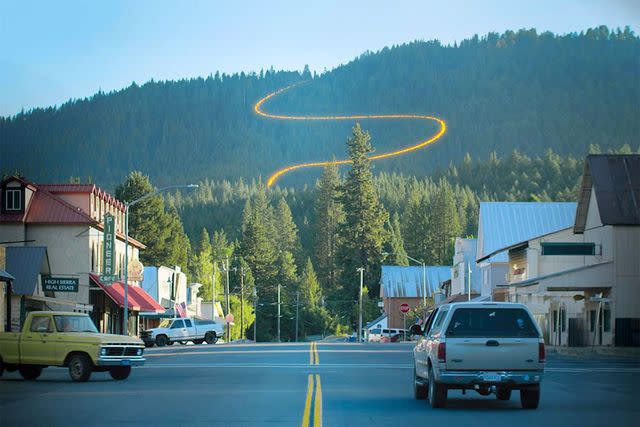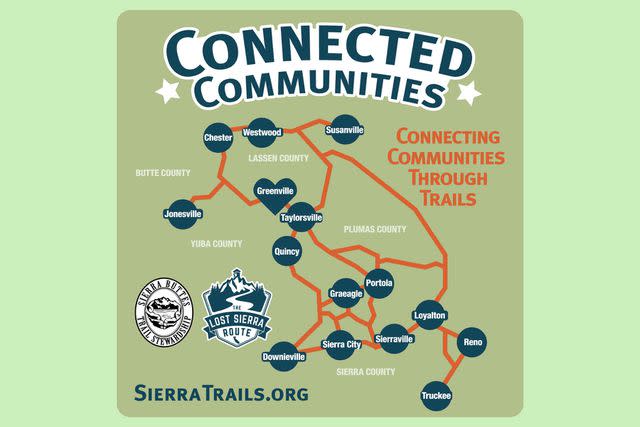This 600-mile Trail Will Connect 15 Mountain Towns Across the American West
Pack plenty of water — this one is a doozy.
Think you've climbed every mountain? Searched high and low? Followed every byway and every path you know? Well, The Connected Communities Project is working to remedy that problem by bringing the hiking community a new 600-mile path to enjoy.
The Connected Communities Project, a collaboration between the Sierra Buttes Trail Stewardship (SBTS), the U.S. Forest Service, and other community partners, is diligently working to create a 600-mile network of multiuse trails that will one day connect 15 northern California mountain towns to Reno, Nevada. And it will be known as the Lost Sierra Route.

"It will create a vision for a recreation-focused lifestyle through community investment, shared stewardship, economic opportunity, and important new local jobs, all benefiting economically disadvantaged communities in California's Plumas, Sierra, Butte, Lassen, and Nevada counties," SBTS explained on its website. "Our work will include planning, environmental review, trail creation, and maintenance of trails. It is the intent of this project to diversify recreation throughout the region, provide economic stability, as well as support fire recovery and prevention efforts."

Additionally, SBTS noted, the trail will create a learning landscape and pay homage to the region and historic Gold Rush-era mail delivery route as it makes its way over "breathtaking topography, jagged peaks, and high alpine meadows similar to the Pacific Crest Trail (PCT) and the John Muir Trail (JMT)."
But unlike those trails, this one will allow for all "dirt trail travelers," which includes not only hikers, but also mountain bikers, motorcycle riders, equestrians, trail runners, hunters, and fishermen, to create what it calls "A Trail for Everyone."
Along the way, the trail will highlight 15 mountain communities to help support local economies that have been devastated by everything from the loss of the mining industry to more recent events like wildfires and COVID-19.
"Each mountain town has something unique to offer in terms of terrain, nature, adventure, food, camping — and all have a rich history to experience," SBTS shared. "Through our Planning Phase, we've captured input from community locals on what they'd like to highlight about their town, where they want trails to be located, and the outdoor experience the neighborhood topography and landscape has to offer."
It's important to note this trail system will take an extensive amount of work and several years to complete. Currently, the trail system is in its development stages, but there are two project areas that will begin construction in 2023; the Quincy to Taylorsville connection, and the East Zone Connectivity and Restoration Project, 10 miles of trail construction are set to begin soon.
Additionally, the Sierra Nevada Conservancy was recently awarded funding to enter into environmental review on trail segments that will connect Loyalton and Sierraville to the East Zone Connectivity and Restoration Project. The entire route is scheduled to debut by 2030.
Want to help the project finish a little sooner? The Sierra Nevada Conservancy is hosting three volunteer weekends, including the Quincy Epic Weekend (April 28-30 and Sept. 22-24) and the Lakes Basin Epic Weekend (Aug. 18-20). Those interested can get more details on sierratrails.org. See all the ways you can get involved and keep track of the progress on the SBTS website.
For more Travel & Leisure news, make sure to sign up for our newsletter!
Read the original article on Travel & Leisure.

